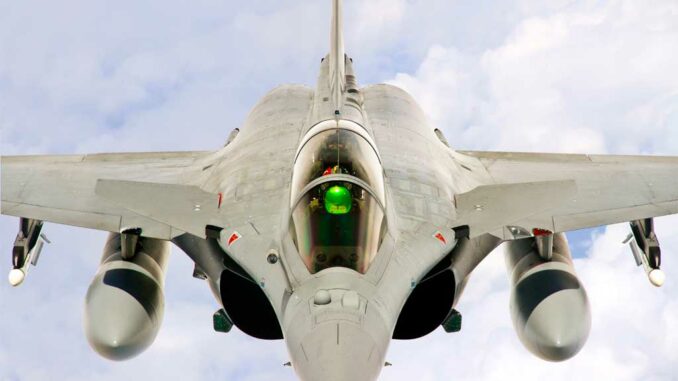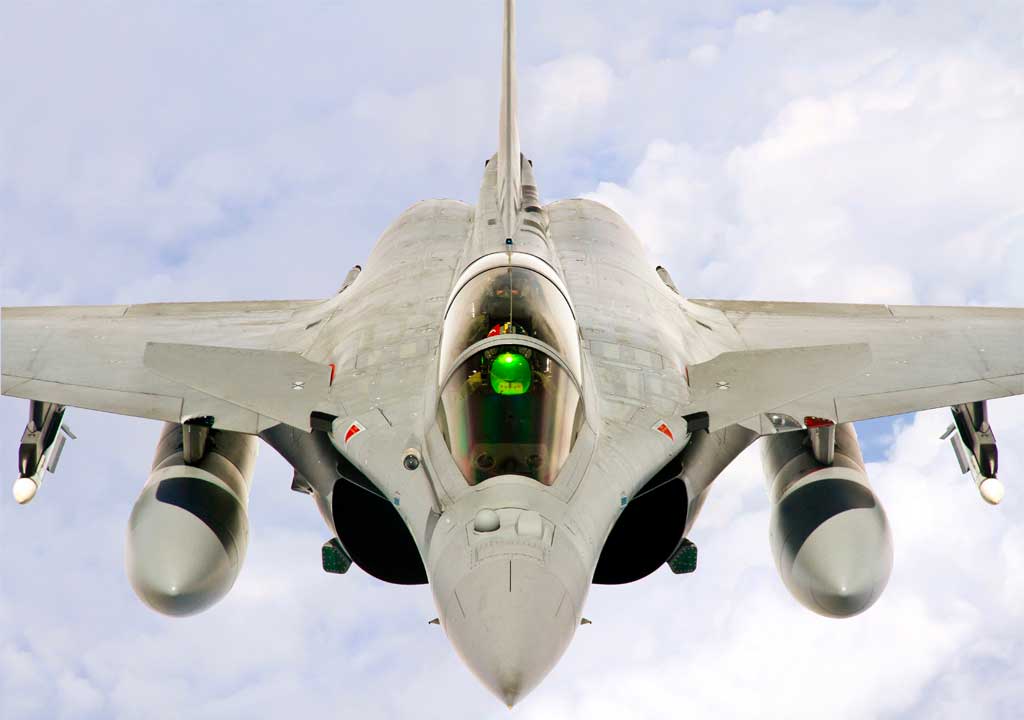
Techniques and systems used by fighter jets to evade long-range air-to-air missiles: maneuvers, countermeasures, electronic warfare.
Since the Cold War, the threat of long-range air-to-air missiles has continued to grow. These weapons, capable of striking a target more than 150 kilometers away, pose a major risk to any fighter jet engaged in modern air combat. The development of missiles such as the Russian R-37M, the American AIM-120D and the Chinese PL-15, equipped with active radar guidance and a range sometimes exceeding 200 kilometers, is forcing pilots and engineers to constantly rethink evasion tactics.
These missiles no longer need to be guided to impact by ground-based or airborne radar. Thanks to their terminal autonomy, they can track a target even after being fired beyond the horizon. However, despite their increasing lethality, many combat aircraft manage to evade them.
The aim of this article is to analyze the specific technical and tactical methods used to avoid a long-range air-to-air missile: evasive maneuvers, electronic countermeasures, radar signature reduction, and radar lock break. Through specific examples, technical data, and real-life cases, this article presents a rigorous analysis of this field of air warfare.
Evasive maneuvers are no longer enough: the limits of defensive flying
Speeds and ranges that reduce the margin for action
A modern long-range missile, such as the Chinese PL-15 or the Russian R-37M, can reach speeds of Mach 4 to Mach 6, or between 4,900 and 7,350 km/h. This means it can travel 100 kilometers in less than a minute. Faced with this type of threat, a fighter jet – even a 5th generation aircraft such as the F-22 – has very little time to react. Classic evasive maneuvers (sharp turns, rapid climbs, spiral descents) are often only effective against short-range missiles.
Anticipation rather than reaction
Pilots rely on their radar warning receiver (RWR) system to be alerted to a launch. As soon as a missile is detected, the course must be changed immediately. The tactic is to force the missile to maneuver to take it out of its optimal energy trajectory. By turning sharply at the right moment, a pilot can force the missile to use up its kinetic energy, reducing its speed and range.
However, this method becomes risky when the missile has a dual-pulse propulsion system or a ramjet engine, such as the European Meteor, which is capable of maintaining thrust until the terminal phase. In this case, maneuvers offer only a slim chance of survival if they are not coordinated with other means of defense.
An essential tool in airborne electronic warfare
Radar jamming and active decoys
Electronic countermeasures have become a pillar of survival in air combat. Modern aircraft are equipped with onboard jammers capable of saturating missile radars. For example, the Rafale’s SPECTRA system emits signals in the same frequency band as the missile’s radar to mislead it or make it believe that the target has changed direction.
Other aircraft, such as the F/A-18 Growler, go even further with external modules such as the ALQ-99 or NGJ-MB, designed specifically for long-range jamming. This type of protection can significantly reduce the probability of a hit by breaking the radar guidance link during the missile’s approach phase.
Flares and chaff: a complementary passive defense
If the missile has an infrared or active radar homing head, the aircraft can also deploy flares (thermal countermeasures) or chaff (metal strips). These devices, projected behind the aircraft, create false targets to deceive the missile’s sensors.
However, these techniques remain more effective against short- and medium-range missiles. Modern long-range missiles have filters to ignore these decoys in the terminal phase. This is why their effectiveness depends heavily on the timing and context of deployment.

Rigorous management of the aircraft’s radar signature
The importance of passive stealth
Reducing radar signature is another crucial strategy. So-called stealth aircraft, such as the F-35 and Su-57, are designed to reflect a minimum of radar waves. Their radar cross section (RCS) is reduced to less than 0.005 m², compared to more than 5 m² for a conventional fighter. This means they can remain undetectable to guidance radars at distances up to 30 to 50% closer than non-stealth aircraft.
At long range, this can prevent a missile from locking onto them before it is even fired. But stealth is never absolute. At short range or against low-band radars, these aircraft remain vulnerable. The tactical use of this stealth is therefore essential: low-altitude flight, radar emission management, and reduction of the thermal footprint.
Electromagnetic discretion: no radar, no target
Many fighter pilots partially or completely shut down their own radar in threat zones to avoid being detected. Instead, they use passive sensors such as IRST (Infrared Search and Track) systems, which track a target by its heat without emitting waves. This approach reduces the probability of being detected by missile counter-detection systems.
Multi-level combat: breaking the chain of fire
Disrupting the enemy before firing
One of the most effective strategies against a long-range missile is to prevent its launch. This involves neutralizing the launching aircraft before it enters firing range, generally beyond 100 kilometers. This is the principle of BVR (Beyond Visual Range) combat, where superiority in detection and command plays a crucial role.
A fighter aircraft equipped with long-range AESA radar and a good data link system can share detection with other units, avoid entering the enemy’s effective range, or even use a decoy to divert attention.
Coordination with other vectors
In some cases, a fighter uses a decoy drone or a jamming missile to disrupt the enemy’s firing chain. The concept of a swarm of drones piloted from a mother aircraft also aims to absorb enemy missiles or divert them. These tactics are beginning to be used in modern theaters of operation, such as in the South China Sea and Ukraine.
Finally, the support of electronic warfare aircraft and AWACS remains fundamental: they enable threats to be detected earlier and guide aircraft to optimal evasion trajectories.
Escaping a long-range air-to-air missile is not the result of a single maneuver or a single technology. It is a combination of tactics, onboard systems, stealth, radio discipline, and cooperation between aircraft. A modern fighter jet never acts alone: it relies on a network of sensors, jammers, radars, and coordinated air support.
But as long-range missiles evolve, the margin for error shrinks. Air warfare is becoming a confrontation between speed, algorithms, radar signatures, and real-time processing capabilities. What makes the difference today is not weaponry, but the ability to decide faster, detect earlier, and deceive more intelligently.
War Wings Daily is an independant magazine.